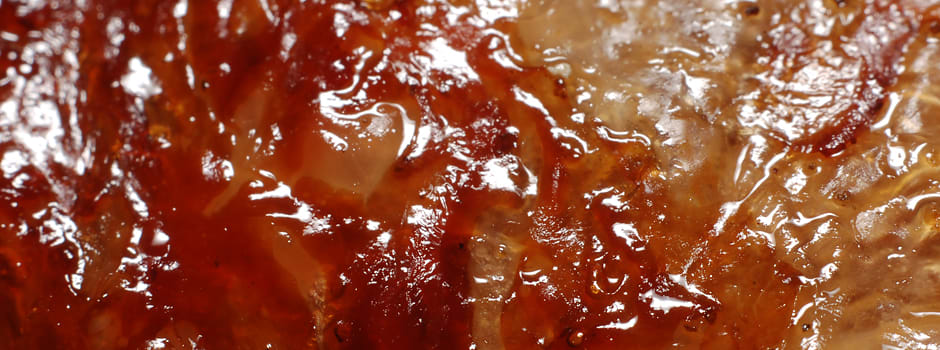 Credit:
Credit:
Products are chosen independently by our editors. Purchases made through our links may earn us a commission.
With Thanksgiving rapidly approaching, our thoughts inevitably turn to food. Of course, we like to tell ourselves that Thanksgiving is all about family, togetherness, giving thanks, and celebrating the first American pilgrims. But in the darkest recesses of our souls, we all know this is a lie. Thanksgiving is about three things and three things only: food, food, and food.
So what is it about food that makes it so tasty? Why does the smell of a perfectly cooked turkey dinner with all the trimmings make us salivate? Well, as the late 90's one-hit-wonders Semisonic tell us: It's all about chemistry.
Put aside any mental images you may have of test tubes and bunsen burners: We're talking about chemistry on the molecular level. There are a number of chemical reactions that occur when you're cooking food, and arguably the two most important—or at least the two most immediately noticeable—are the Maillard and Strecker reactions.
The rich brown skin of a perfectly roasted potato, or the heavenly crisp crust of a fresh-baked loaf of bread are a direct result of the Maillard reaction, which occurs when carbohydrates and proteins are heated together. The resulting compounds differ from food to food, which is why pork chops and french fries taste so different (yet both taste so darn good).
The look and taste of food is all well and good, but these elements are only part of the puzzle that makes up a delicious meal. Eating is, after all, as much an olfactory process as it is gustatory, and nothing gets the mouth watering like the smell of a roasting turkey.
That delicious odor is all thanks the Strecker reaction, whereby carbon dioxide and ammonium are separated from methionine. This process leaves behind methional—one of the main contributors to the odor of cooked meat.
There are a number of additional reactions that occur in the kitchen, all of which combine to create the tastes and smells we associate with Thanksgiving food. So when you, your friends, and your family are gathered around the dinner table and about to give thanks, maybe you should spare a brief thought for chemistry.
For more details on the Maillard and Strecker reactions, along with a broader view of the chemistry of cooking, check out the Reviewed.com Science Blog
[Hero Image: Flickr user "N0 Photoshop"]
